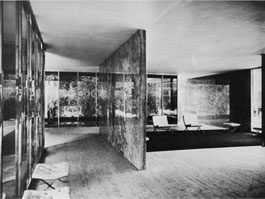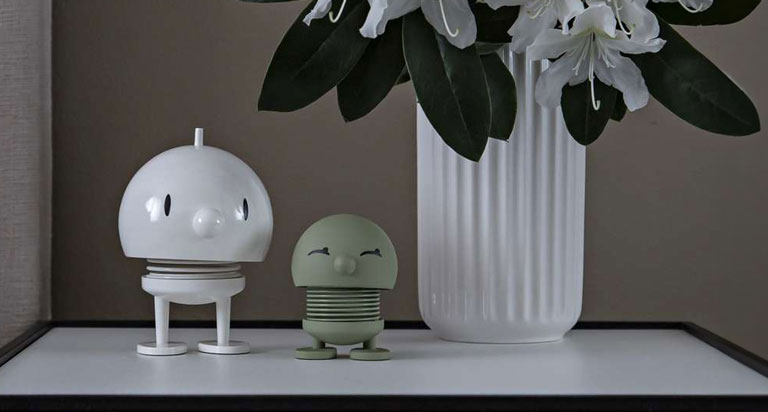Barcelona-Pavilion
"Architecture begins where two bricks are carefully joined together.” This cite comes from one of the maybe most important architects of the 20th century: Ludwig Mies van der Rohe, whose birthday takes place for the 127th time this year.
Mies van der Rohe entered architecture history in Barcelona in 1929 at the latest, with his Barcelona-Pavilion, the German contribution to the world exposition. This however, needed more than two bricks: “If I had used bricks, the pavilion would have been an equally good architectural piece, but I don’t believe it would have become as famous”, commented the master looking back.

The Creation of the Barcelona-Pavillion
When Mies van der Rohe was named the Art Manager of the German contribution to the International World Fair in Barcelona in 1928, the German pavilion wasn’t even part of the job. The decision therefore only came a few months before the opening, when the German government learned that England and France would make independent national pavilions. They intended to do the same and to offer a portrait of the Weimar Republic architecture: The building was to represent the young republic as democratic and peaceful and as a culturally and technically advanced country.
In contrast with ambitious symbolic tasks, the practical function of the pavilion was only marginal: It was supposed to offer a roof for the Spanish royal couple and the Weimar delegation when signing the guest book. And that is what may have led to the success of the pavilion: No functional program demanded a sophisticated appearance; it was not covered with exposed pieces inside. It was the exposed building itself, a new kind of architecture previously unseen. Mies van der Rohe placed the pavilion next to a water surface on a socket directly facing the surrounding nature, as if it was a temple.

A New Kind of Architecture…
Eight steel tubes carried the ceiling, seeming to float. The walls were completely made of glass and they were held in place by room-dividers made of marble and travertine. Far from supporting the pavillion, the walls seemed weightlessly to glide under the concrete roof. That was how Mies van der Rohe presented his design principle of a free floor plan, with flexibly placed walls. Since the floor, roof and walls never surrounded the whole room, the passage between the single areas of the pavilion was continuous. The visitor could walk through the pavilion without ever entering an enclosed space.
Due to the staggered arrangement of the pavilion's free wall elements, there were many free views, making a clear border between inside and outside impossible. This concept of an open room was extended in the whole pavillion by Mies van der Rohe: Despite the clear geometric structure, the visitor was given different connecting rooms and the architecture allowed one to think.

...with revolutionary furniture
Mies van der Rohe was convinced that complete harmony was only possible, if the design of the furniture also supplemented the structure of the building. The opening needed suitable chairs for the royal couple, and that was how Mies van der Rohe created the MR 90, a chair, which he named a “monumental object”, becoming a milestone of modern design. The use of a welded steel strip was unusual; it provided stability for the scissors shape of the chair. The inspiration for it came from ancient times: Mies van der Rohe wanted to imitate the form of divine and royal Greek folding chairs for his Barcelona Armchair.
But despite being offered a kind of modern throne, the Spanish royal couple despised the armchair during the opening ceremony and they were never used. Only a few months after the exhibition, the pavilion was unmounted and sold in its single pieces. But even after its demolition, the Pavilion remained a point of reference of architecture in the 20th century. More and more people wanted the pavilion to be rereconstructed. In 1986, the pavilion was built again and opened at the same place for the 100th birthday of Mies van der Rohe. To this day it fascinates a lot of visitors every day.
